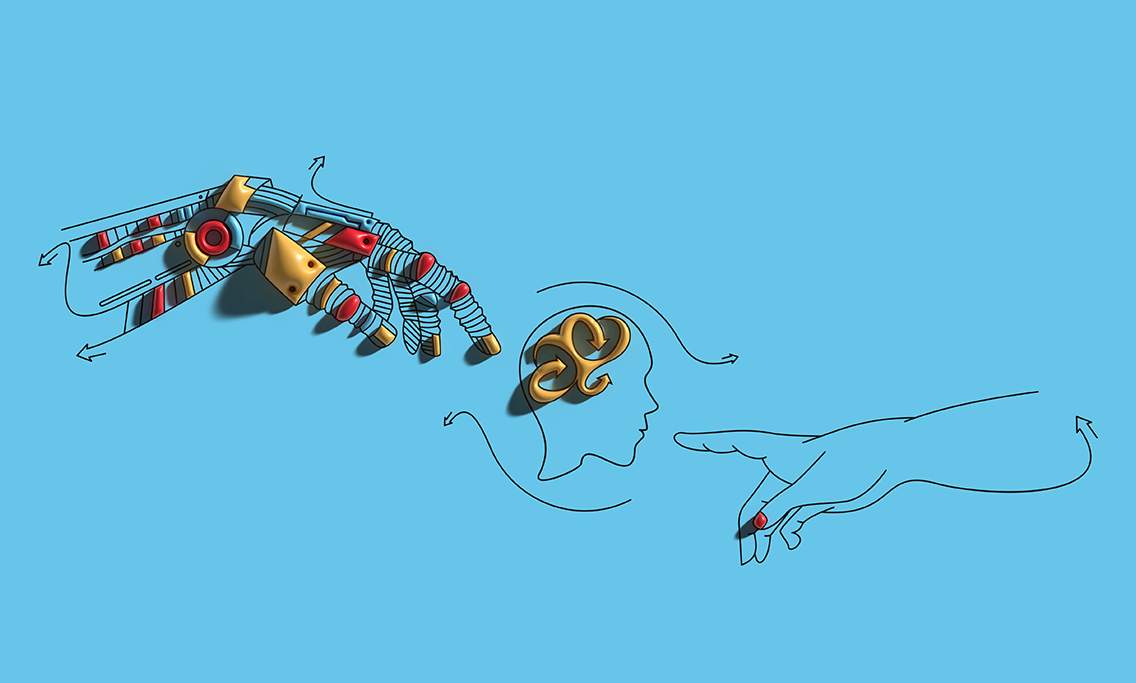3 min read
Not All Artificial Intelligence Looks Like ChatGPT
ChatGPT has been in the news so much lately (including here!) that it’s quickly becoming that thing all trademark holders fear: synonymous with its category. Today’s common words for “escalator,” “cellophane,” and “bubble wrap,” for example, were once all company trademarks — proper names reserved to the companies that developed them, but lost due to both poor trademark defense and, more importantly, their words having entered the common vernacular.
ChatGPT is leaping to mind whenever artificial intelligence is discussed, but the two are hardly synonymous. ChatGPT is definitely an example of AI, but the term encompasses far more than just what ChatGPT does.

What defines “artificial intelligence?”
As we’ve covered in the past, the term “artificial intelligence” (AI) refers to the ability of computer systems to perform tasks that usually require human intelligence or ability, such as visual perception, speech recognition, decision-making, and language translation. AI systems can learn from data, adapt to new situations, and improve their performance over time without additional programming.

But that’s a broad definition, and within AI, there are various specializations and applications that are key to understanding what they are and how they can be used. It’s important to think of AI as a category that has multiple subcategories, similar perhaps to how we think of pickup trucks, sports cars and minivans as all being subcategories of vehicles, with very different applications.
Generative AI
ChatGPT is a subcategory of AI known as “Generative AI.” In essence, this is artificial intelligence that uses algorithms to create ostensibly new content — text, photos, or video for example. They are “trained” by being fed data — examples and information they can draw from.

NOT all AI is generative AI. In fact, that category is relatively new, at least for commercial application. Many agree the first commercially available generative AI system was IBM’s “Watson,” which was introduced in 2011. Prior to that, most examples of attempts at a generative AI are confined to experiments the public never had access to.
Generative AI can be further categorized by what it’s generating, and potentially even by how it was trained.
Generative AI is NOT AGI
Further confusing things is the fact that Generative Artificial Intelligence looks kind of similar to Artificial General Intelligence, or AGI. And many stories have talked about ChatGPT as though it is AGI, but there’s a HUUUUGE diff.
AGI refers to the Holy Grail of artificial intelligence: the as-yet-unrealized ability of an artificial intelligence system to perform any intellectual task that a human can do. AGI systems would be capable of learning and adapting to new situations, reasoning about complex problems, and displaying creativity and intuition. Unlike specialized AI systems that are designed to perform a narrow set of tasks or functions, AGI systems would have a broad range of cognitive abilities and could potentially perform any task that a human can do, from solving mathematical problems to writing poetry or composing music.

While AGI is something numerous researchers have been working toward, uncertainty surrounding what happens when a system reaches this level of sophistication has prompted some technology leaders like Elon Musk to advocate a pause to consider the potential impacts.
For now, and likely for many years yet to come, no system developed will qualify as AGI.
Other types of AI
Most AI doesn’t generate any new content. Instead, it automates tasks while, as noted in the introduction, learning and adapting. This kind of AI is all around you. Whether you have a smart speaker like Alexa, or are familiar with spell check — you’ve at least seen if not used it.

One important application of artificial intelligence is machine learning. Machine learning is a subset of artificial intelligence whereby a computer program can learn to recognize patterns in data and use those patterns to make predictions or decisions without being explicitly programmed to do so. Machine learning systems can do all kinds of things, from recommending a shirt from your favorite retailer to offering up news articles the algorithm has predicted you’ll find most interesting or useful. And not one of them is generative AI, like ChatGPT.
The process of machine learning typically involves feeding large amounts of data into a computer system, and then using algorithms and statistical models to analyze that data and identify patterns. The system then uses these patterns to make predictions or decisions about new data it encounters as it works.
Machine learning has a wide range of applications, from natural language processing and image recognition to fraud detection and predictive maintenance. It’s used extensively in industries such as finance, healthcare, and retail to automate tasks, make predictions, and improve decision-making processes.
Botkeeper uses machine learning to categorize transactions — we’ve trained it on millions upon millions of transactions, and as you use it, it continues to learn how to categorize your transactions, getting better every single time it’s used. It’s an example of non-generative AI. And we’re reasonably sure it isn’t planning a rebellion against the humans.
AI will continue to get more sophisticated and enter new areas, but it’s a very large field with varying applications and make-ups, much larger than just ChatGPT alone.
We’d love to show you our AI in action. Botkeeper’s machine learning can save you tons of time and money by automating those bookkeeping tasks you always seem to be buried under. Just click below to set up time to see it for yourself!





